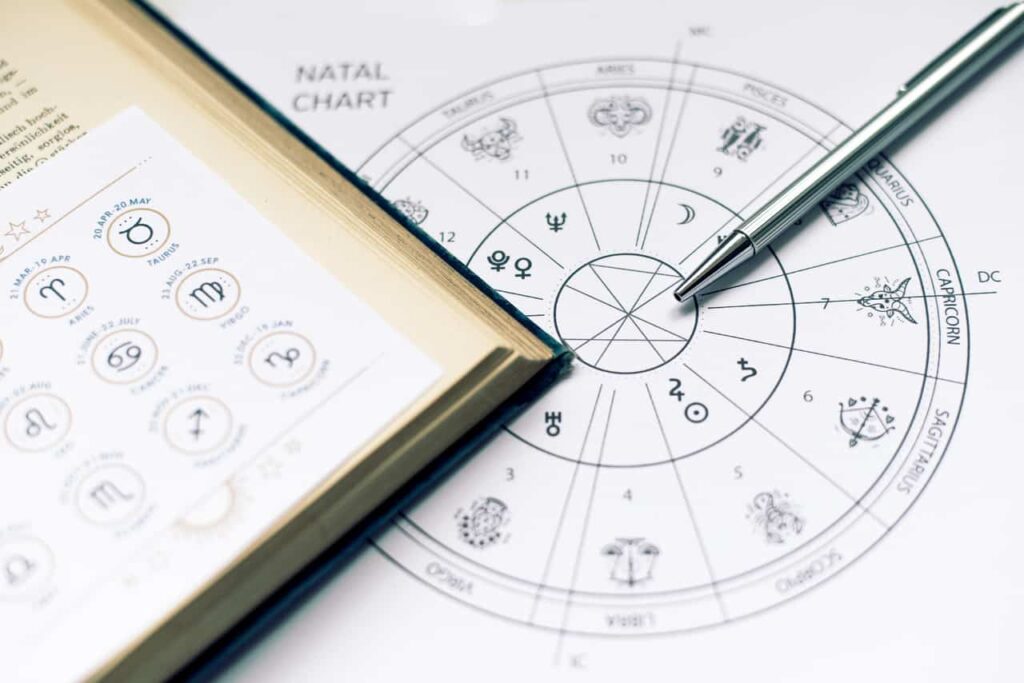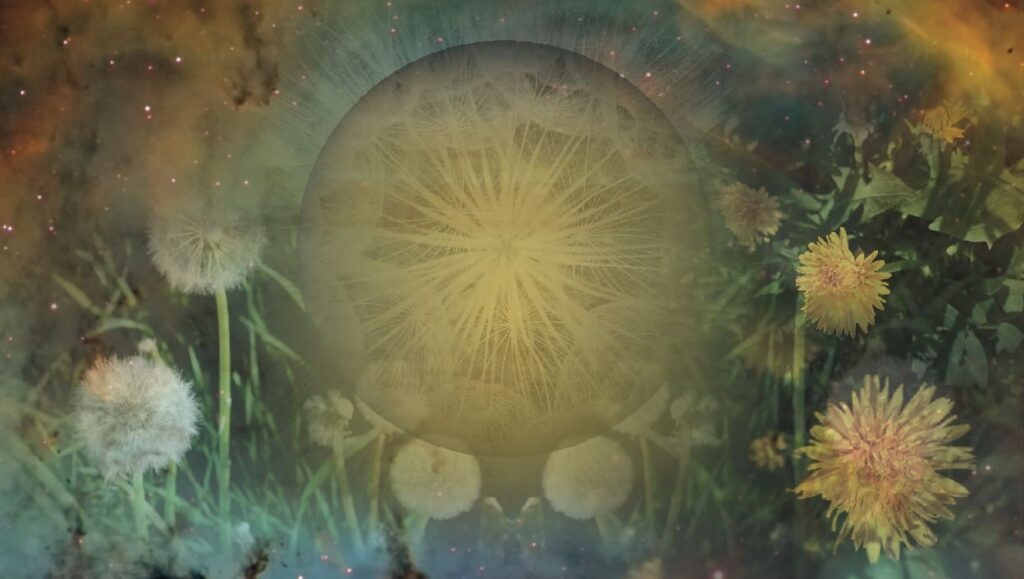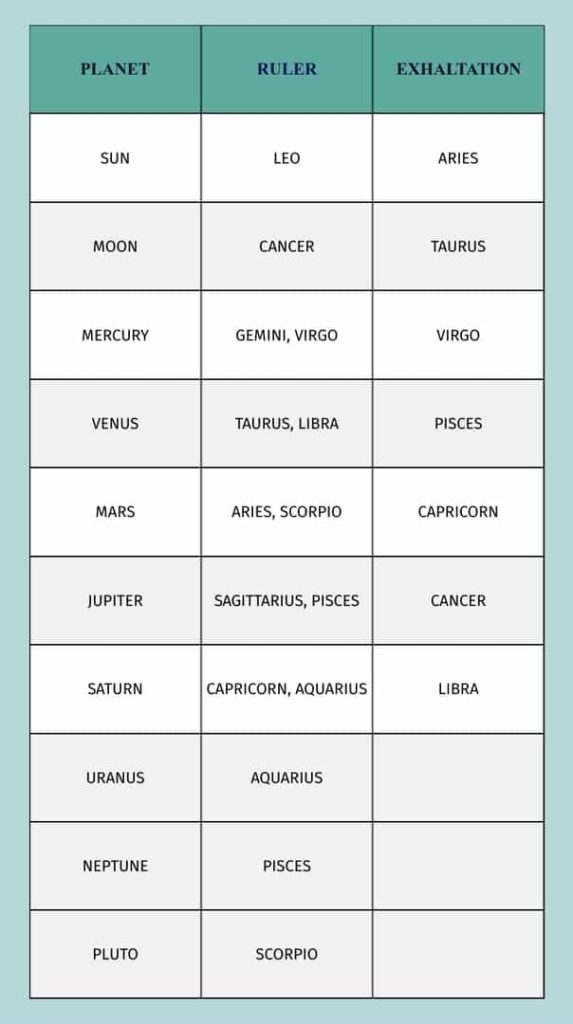The natal chart, also known as the birth chart, can be a powerful assessment tool in your astro-herbalism practice.
Although analyzing a natal chart may seem daunting at first, there are specific planetary placements you can study that reveal information about your physical characteristics, health patterns, and overall constitution.
This information can help you understand underlying imbalances that fuel disease and how to absolve it at its root using natural health protocols.
In today’s blog post, you’ll learn about:
- Which planetary placements in the natal chart are most significant to study concerning your physical health
- What each of these placements signifies in regards to your wellbeing
- How to use herbs in harmony with your innate patterns to encourage balance
- Ways in which the natal chart can be used as a part of preventative medicine
- How to read the natal chart to understand the timeline of disease; in its past, present, and future expression
Table of Contents
When practicing astro-herbalism, there’s certainly a lot to consider.
Is your Sun sign as important as people think when it comes to determining your health and disease predispositions? And what constitutional patterns can a stellium reveal? Overall, what are the most important parts of the chart to consider from a medical perspective?
Whether you’re a seasoned practitioner or an herbal novice starting, it’s easy to get swept up in this constellation of questions (pun intended, thank you). There are many ways you can assess a natal chart, also known as a birth chart, to determine astrological archetypes. Used well, this can become a sound assessment tool in your herbal practice.
So where do you begin? By clarifying your goals with practicing astro-herbalism.
With astro-herbalism, there’s a well-established path that focuses primarily on psycho-spiritual wellness. Although today we’re focusing on factors that speak towards our physical health, ultimately this side is intimately connected to the psycho-spiritual since they follow the same pattern.
When analyzing the natal chart in this fashion, it can help you understand factors that influence the way you live, breathe, and move in your physical body. It can also point towards daily habits or rhythms you include in your life that contribute or take away from your overall sense of vitality and wellbeing.
By studying your astrological portraits, you’re offered the opportunity of receiving a refreshingly objective snapshot of your overall health. Rather than getting lost and being unable to see the forest for the trees, using your natal chart as an assessment tool can help you to swiftly ascertain patterns of health regarding your overall constitution, health patterns, and organ functioning.
If you’re building a new house, you want to ensure there is a solid infrastructure. If it doesn’t have an equal distribution of weight, you might need to install a pillar or two in strategic placements to ensure the longevity of the structure and that it can withstand the outer elements.
Just as you use the blueprint of a building to identify which parts need additional bolstering, you can use your natal chart to help you understand intrinsic facets of your health that may require additional support and attention throughout your life.
For example, if you have a lot of Virgo in your chart, you may find that your small intestine and liver require a little extra care in your health practice. With this understanding, you can use bitters and carminatives that have an affinity for these organs throughout times of stress, or you may develop dietary habits that support them as well.
There’s a lot to look at in a natal chart. Knowing which planetary placements are most pertinent for gleaning information about your health is a great way to strategically process information that will help you form a solid assessment.
Star Players
The planetary influences in your chart aren’t like kids vying for center stage in a school band.
Rather, they’re like an orchestra performing a symphony that highlights each and every sound.
Depending on your planetary placements, the song will sound different than that of your neighbor or your friend. There may be solos that highlight certain performers, such as when you have a particularly strong planetary influence in your chart. However, ultimately they work together to generate a harmony larger than its parts.
There are many significant planetary placements to look out for when practicing medical astrology. Let’s discuss the ones that often cast a strong influence on your physical health and the factors related to them.
Your Ascendant Sign
Two very significant parts of the chart include the sun sign and the ascendant.
The sun sign points towards your inner characteristics, the ones tied to your innate nature that the people you’re close with see. Although your sun sign may be completely different from your ascendant sign, this latter placement is what will often dictate your physical expression.
In other words, if you have a Scorpio sun but a Sagittarius rising, people may perceive you as a Sagittarius for your playful and enthusiastic nature rather than a Scorpio with an innate depth and intensity.
Because the ascendant sign rules the energy you exude and express, it’s a prime example of the energy that rises “up and out of the body.” In this sense, you can better understand how it directs a lot of your physical constitution. For example, a Sagittarius ascendant might express the Fire Element strongly and may appear Pitta in nature. However, it might express itself with Vata attributes due to the mutable mode of this sign.
There are times when other planetary energies call more attention and even trump this planetary placement, such as having a stellium or a planet closely conjunct the ascendent. However, the ascendant should always be assessed and taken into account when analyzing the natal chart.
Another facet of studying the ascendant is factoring if there’s any planet that’s in the first house or is conjunct the ascendant.
A planet in this position has a great effect on your overall physical characteristics and the nature of your body, such as its patterns in regards to deficiencies, excesses, weaknesses, and strengths.
With such a strong influence on your constitutional disposition, you can use this information to help you understand which remedies to use to replenish deficiencies and decrease excesses in your chart to encourage greater balance and stronger health.
A Stellium
A stellium occurs when you have five or more planets in a single sign. Although not foolproof, a stellium will often hold a stronger influence over your constitution than your rising sign or a planet conjunct the ascendant sign would.
Although stelliums are not incredibly common, they can be a strong constitutional ruler and are important to understand in case you do spot one in a chart.
There is always strength in numbers. A rope comprised of many tightly wound fibers will hold greater than one made of fewer loosely wound ones. Similarly, when there is a cluster of planets found under a single sign, the archetypal energy of this particular sign will be increased, sometimes to the point of imbalance.
Although stelliums always illuminate the energy of the sign the planets are in, it will be expressed especially strongly if the stellium includes the Sun and Moon. Some other planets that will increase its influence in a chart include Venus, Mars, and Mercury. This is because these planets are all in close contact with one another in the sky.
Because stelliums act as such powerhouses in the chart, they have the potential of causing an imbalance to develop due to the concentration of energy they possess. One of the ways you can remedy this is by using remedies of the opposite sign to encourage balance.
For example, if you had a Leo stellium, you might want to use herbs that possess cooling and cardiotonic qualities because Leo rules the heart and cardiovascular system. Furthermore, because Aquarius is opposite Leo, and Aquarius rules circulation and capillary health, it could be helpful to include herbs that encourage healthy pressure and capillary dilation as well.
Although we tend to think of strength occurring in numbers, there can be something undeniably powerful as an entity standing alone; nearly in defiance of the populace that surrounds it. In astrology, you can observe this as something called a singleton.

Singletons
A singleton is a planet that stands alone in a particular hemisphere of the natal chart. For example, it may be found in the far left or right half, or the top or bottom half. Wherever it’s found, it will stand alone in one half of the chart.
Seemingly opposite to the concept described before, it may seem unlikely that a single planet can call upon so much energy to itself.
However, if you’ve ever viewed a painting with a crisp white coat, lots of details on one side, and a completely blank opposing half save a singular meticulously drawn circle, that’s often where your eyes will go despite the action occurring on the other half of the canvas.
In a sense, the circle acts as a focal point that the eye can’t help but be drawn to.
Singleton planets act similarly. The planets work cohesively to maintain a constant line of communication between each other. Because singletons stand alone, they function as a circuit that draws and directs tremendous energy between itself and the other planets.
Although they seem small, singletons act as powerful focal points and should be measured for when assessing a birth chart, especially when it stands across a stellium or other planets stand opposite it on the other side of the hemisphere.

Transits
Transits represent the physical motion of the planets and the relationship between their current day positioning and the location they were in upon your birth.
By understanding the relationship between the two, you can glean information about your health in terms of the timing and development of illness. For example, transits can indicate the specific timing of onset and triggering of disease potentials found in the natal chart.
Studying the transits can help you understand what triggers led you to experience illness. From a preventative perspective, it can help you predict when an imbalance may occur and inform you of the necessary steps you need to take to prevent the disease from developing, such as strengthening deficiencies and tamping excesses.
By incorporating protective lifestyle factors, such as diet, herbs, and homeopathy, you can support your health by diligently taking action before the transit occurs.
Planets in Their Sign of Rulership or Exaltation
A planet resting in its sign of rulership is when it is sitting in its most natural environment.
Each planet has a unique disposition that can be expressed with greater ease in some positions than others. When a planet is in its sign of rulership, the relationship between the planet and the sign it is in are harmonious and sympathetic. As a result, its energy and qualities are magnified.
Because the sign and planet are similar to each other, it generates a strong position and can sway the influence of the other energies in your chart. With this amplification, a planet in its sign of rulership should always be accounted for.
Similar to a planet in its sign of rulership, a planet in its sign of exaltation will have a harmonious relationship free of obstruction. The sympathetic resonance that exists between planet and sign encourages its energetic expression. The degree of exaltation a planet is in will amplify its influence even further.
Although a planet in its sign of exaltation can lead to observable skills and gifts, it can also lead to an energetic excess in the natal chart. By using remedies to dampen superfluous energy, you can support the beautiful qualities of this placement while preventing an imbalance from developing.
The planets in their signs of rulership and exaltation are:
Planets in the Sixth House
There are twelve houses in the natal chart, and each house governs a different facet of our life. Because the sixth house rules health, this is an essential part of the natal chart to assess when searching for health patterns and trends.
For example, if you have Venus in the sixth house, you would look for potential issues with the kidneys or venous circulation as these are governed by Venus.
Additionally, if you have Pisces or Sagittarius in the sixth house, two signs ruled by Jupiter, and Jupiter is on the ascendant as well, this would strengthen its influence in the chart and is essential to consider from a medical perspective.
Nothing exists in a vacuum, and everything hints towards another clue. Planets in the sixth house act as easy places to start from or connect with as they are already in a house that speaks directly towards matters of health.
The Most Significant Placement Is in Front of You
There are two ways you can use natal charts in your practice.
Used well, the natal chart can act as a map that helps you navigate a consultation. With its objective representation of your astrological profile, it clarifies landmarks worth investigating further and uncovers questions worth asking. Used poorly, it can be employed in a reductionist manner that makes the person behind the chart feeling forgotten.
When you’re working with someone to help improve their health, it’s best to ask questions that help you gain a greater understanding of their mental, emotional, and physical attributes and constitution.
If you find yourself hitting a roadblock, asking someone a multitude of questions, yet still feeling bewildered and unsure of the underlying pattern, analyzing the natal chart can be a powerful assessment tool to clarify this.
Alternatively, if you feel a hunch as to what is contributing to someone’s apparent dis-ease, you can review the natal chart to confirm what you’ve gathered from the consultation itself to confirm your conjecture.
As a preventive tool, you can assess someone’s natal chart to better understand what natural health measures they can implement to best support their unique disposition.
When using natal charts in your practice as an assessment tool, we don’t want this to speak over the person we’re working with. Instead, we can use it to help us ask questions, gather information, and determine solutions that will provide us with a healthy today, tomorrow, and the rest of our lives.












